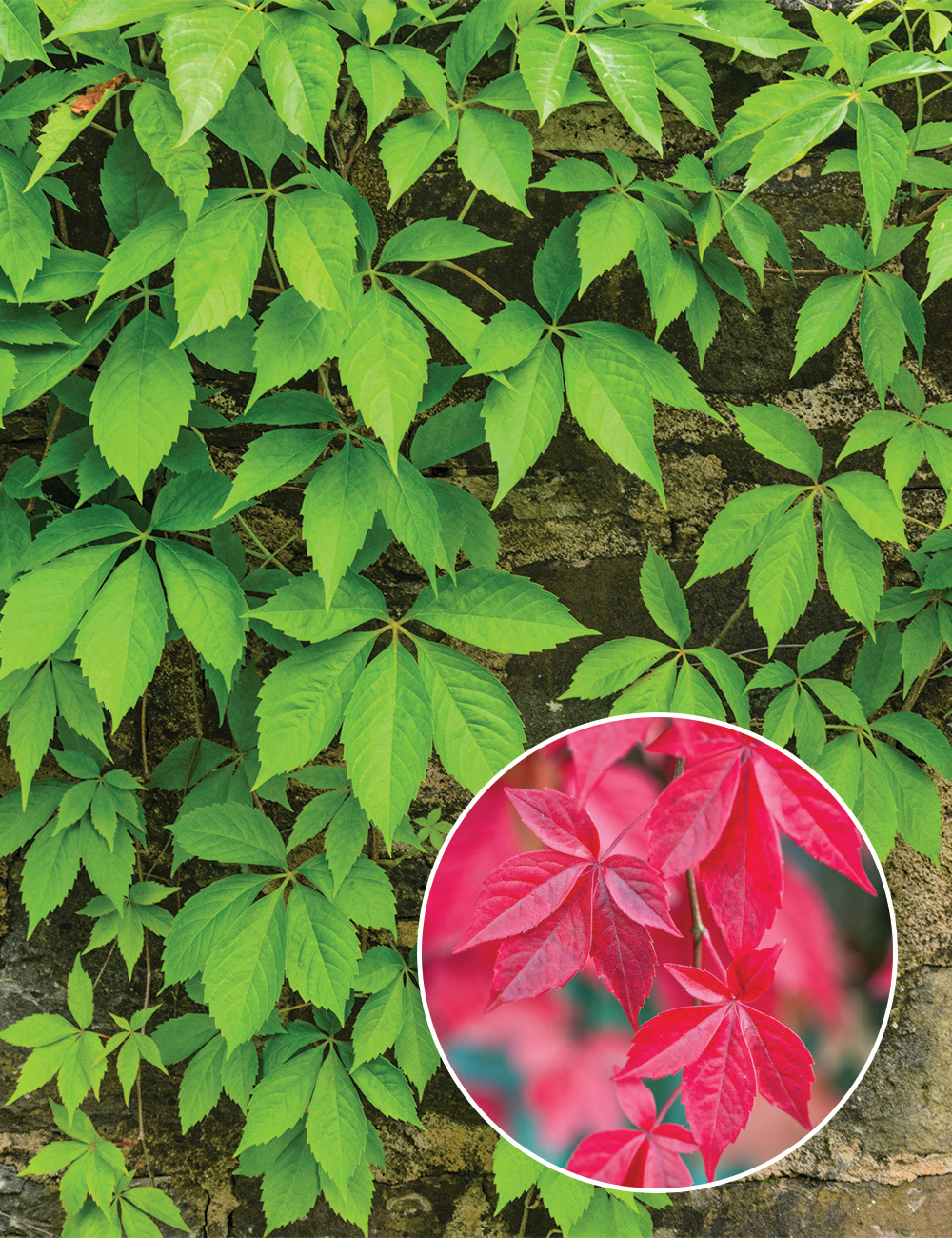
:max_bytes(150000):strip_icc()/thespruce.com-taxonomy-of-virginia-creeper-2132897-2-2ed185b3f15e4117a5619d6443657b62.jpg)
It self-seeds readily (or the seeds are dispersed by birds) so it can become weedy in landscaped areas. Because of their high concentration of oxalic acid they are moderately toxic to most mammals, including humans. The hard, ¼ inch diameter berries that each contain 2 or 3 seeds that are inedible to humans (and toxic when ingested in quantity) but are an important source of food for songbirds in the winter, and deer, squirrels, skunks, and other small animals also eat them.

The peduncles change from green to bright orange-red or red in the fall. The berries mature from green to blue-black in late summer and persist on the vines.įlowers are followed by round, fleshy, berries that mature from green to blue-black in late summer or early fall and persist on the vines. The inconspicuous flowers (C) are produced in wide clusters (L and LC), with greenish-white recurved petals and prominent stamens (RC and R). Because of their small size and inconspicuous color, as well as generally being hidden by the foliage, bloom on this plant is rarely noticed. On each plant the flowers may be perfect, staminate only, pistillate only, or both staminate and pistillate.

Each ¼ inch wide flower has 5 greenish white, triangular, recurved petals, 5 white stamens with large yellow anthers, and a pistil with a stout style. The inconspicuous flowers bloom in late spring or early summer in 4-6 inch wide clusters (panicles of compound cymes) of 50-150 flowers in the upper leaf axils, with each flower at the tip of its own peduncle. In the fall the foliage turns bright red or purple making the plants much more conspicuous than during the summer. It is one of the earliest vines to color in the fall. They remain attractive through the summer, and in the autumn turn bright purple or red before falling off the vines. The leaves are a dull green on the upper surface and light green below. The new leaves are pale or bronzed (L and C), and glossy green (R) before maturing to a dull green. Each compound leaf is held on a slender petiole 6-8 inches long. The leaves are rather variable in appearance, with some vines having broad leaflets with blunt tips and others with slender leaflets with long tips. The leaflets have coarsely toothed or serrated margins (at least along the top portion), pointed tips, and taper to the base. The alternate leaves are palmate, typically with five ovate leaflets, although leaves on young vines may have only three leaflets. The new leaves are bronze, purplish, or green tinted with red when they emerge in spring, expanding to up to 6 inches long and 2½ inches across. The plant’s tissues and sap contain microscopic, irritating needle-like calcium oxalate crystals called raphides that can cause contact dermatitis (skin irritation and blisters) in sensitive people. The new stems are smooth and green, but eventually they turn brown and woody and finely pubescent. Growing on the ground, it forms a ground cover about a foot high, with roots forming at the nodes whenever the vines come in contact with soil. Virginia creeper has branched tendrils (L and LC) that cling with strong adhesive disks on the tips (RC and R). The tendrils are produced on the stems opposite from the leaves. This vigorous, deciduous woody creeper and climbing vine can grow up to 50 feet – and 20 feet in a single year – clinging to surfaces with small, branched tendrils that have strong adhesive disks on the tips to fasten onto bark or rock. The leaves of Boston ivy are 3 lobed with smoother edges and the tendrils are much shorter than on Virginia creeper. tricuspidata, native to Asia, zones 4-8) does not survive. It is hardier than Boston ivy, growing in zones 3-9, so is often used where Boston or Japanese ivy ( P. Virginia creeper grows along the ground in woodlands, often growing up trees or telephone poles on woodland borders, or in open areas such as along railroad right of ways, rocky bluffs, fence rows, banks of streams or lakes, and in disturbed habitats in both rural and urban areas. Virginia creeper has five-fingered leaves. inserta, also called woodbine, is very similar in appearance but cannot climb smooth surfaces like P. Virginia creeper has many other common names including five-leaved ivy (it is not closely related to the true ivy, in the genus Hedera), five-finger, and woodbine. quinquefolia, Hedera quinquefolia, and Vitis hederacea. It has had numerous other scientific names invalid synomyms include Ampelopsis hederacea var. The species Parthenocissus quinquefolia is found throughout eastern and central North America, from southern Canada to eastern Mexico and Guatemala. Virginia creeper is a native climber in the grape family (Vitaceae) that is especially noticeable in the fall when the leaves become colored in cool weather. Virginia creeper is a common native woodland plant.


 0 kommentar(er)
0 kommentar(er)
